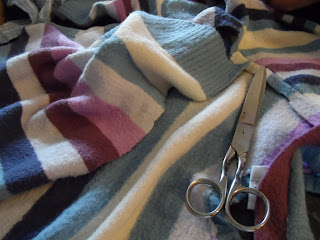Capillary Matting
You can get fancy capillary matting from larger garden centres or from the internet, but in the far north of Scotland, garden centres are not large; even with the internet it can take a long time/or be expensive to get things delivered up here.
And truth be told I like being able to go out to the garage or the loft and get bits and bobs and make things. So when I read on the internet that you could make capillary matting at home from found materials, I went rummaging.
First, for non gardeners, capillary matting is something that transfers water by capillary action (remember dyeing Queen Anne's Lace flowers blue with food colour--that was capillary action.) This is handy for a variety of reasons: propagating seeds because they need a steady supply of water or, in my case, watering a thirsty tomato.
I miss the taste of red ripe juicy tomatoes right from the vine--my vine, so I have tried various things over the years to get tomatoes up here. This year two of the luckier hand me down transplants are living in the sun room. When we get sun, it gets very very hot, so I have been watering them 2 or three times a day and still I came home one day to find my big tomato crumpled into an un-plantlike geometry. Fortunately, he perked up with water, but tomatoes not only need a lot of water they also need a consistent supply of water.
The DIY capillary matting said wool or J cloths or something that can hold water and stay wet without rotting away. I have a lot of wool, so that was a no brainer. I picked a not very pretty sweater partially felted and handed down to me when my friend moved on for the matting.
The matting needs to rest on top of something that does not soak up water--I used a plastic freezer bag stuffed with bubble wrap. And this matting and the island it covers needs to be in a larger container that can hold water.
The plant sits atop the island and the moisture from the matting is taken up by the soil in the pot. That's the theory at any rate. Tune in later to see how the thirsty tomato and the hard working recycled sweater get on.




0 Comments:
Post a Comment
<< Home